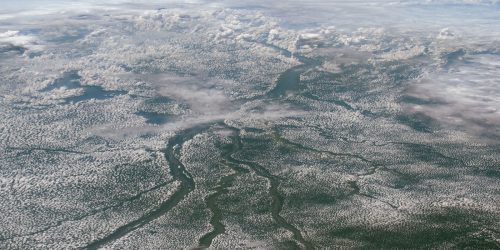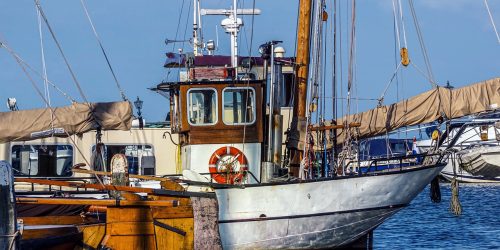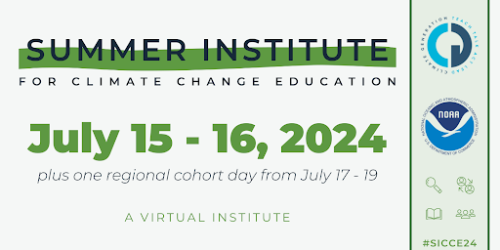The NOAA Climate Variability and Predictability (CVP) Program supports research that enhances our process-level understanding of the climate system through observation, modeling, analysis, and field studies. Driven by the increasing demand for climate information on a longer timescale, CVP has supported modeling studies on the topic of Decadal Climate Variability and Predictability. The majority of these studies have already yielded results, and in the spring of 2023, CVP hosted a webinar series to highlight their latest findings.
The series presented a unique opportunity for researchers to share with a broader scientific community the outcomes of their projects, discuss the importance of their work, lessons learned, and ideas for future work. The group of 17 speakers was composed of scientists from all career levels and institutions, including staff from NOAA’s research laboratories and Cooperative Institutes.
The studies focused on the role of the ocean as a driver of climate variability on the decadal timescale. Both the Atlantic and Pacific regions were studied; several talks discussed variability in the Atlantic Meridional Overturning Circulation (AMOC), the California Current, and the Kuroshio Extension. Common themes between presentations included the different external forcings (volcanic, wind, heat fluxes) that drive changes in sea surface temperature, salinity, and height. Coastal flood risk, marine heatwaves, and the accuracy of models predicting variability in ocean dynamics were also topics of discussion.
Climate variability refers to the natural changes in the average of weather patterns on relatively short to medium time spans. Changes in these variability patterns (e.g., temperature, precipitation, etc.) can be enhanced by humans.
In addition to presenting their findings in the webinars, CVP-funded researchers have also published them in a few scientific journals.
Presenters Qiuying Zhang (Texas A&M University), Ping Chang (Texas A&M University), and Stephen G. Yeager (NCAR) co-authored a paper in Geophysical Research Letters, “Role of Sea-Surface Salinity in Simulating Historical Decadal Variations of Atlantic Meridional Overturning Circulation in a Coupled Climate Model.” The paper concluded that realistic Atlantic meridional overturning circulation (AMOC) decadal variations, which are vital for decadal climate predictions, can be simulated using a model that includes both sea-surface temperature (SST) and sea-surface salinity (SSS).
Presenter Timothy DeSole from George Mason University co-authored an article in Advances in Statistical Climatology, Meteorology and Oceanography, “Comparing climate time series – Part 2: A multivariate test.” Desole and his co-author proposed a criteria for deciding whether climate model simulations are consistent with observations. The results of the article imply that climate models do not provide a satisfactory explanation of observed variability in the North Atlantic.
Presenter Mer Pozo Buil from the University of California, Santa Cruz co-authored a review article in Frontiers in Marine Science, “Using Global-Scale Earth System Models for Regional Fisheries Applications.” The article provides a brief overview of some of the most prominent differences–normally caused by structural differences in the biogeochemical sub-models within Earth system models–among the most recent generation of Earth system models and how they are relevant to living marine resource application.
Presenter Denis Volkov from NOAA’s Atlantic Oceanographic and Meteorological Laboratory (AOML) co-authored an article in European Geosciences Union titled “Interannual to decadal sea level variability in the subpolar North Atlantic: the role of propagating signals.” The results of this study indicate that signal propagation is an important component of the North Atlantic sea surface height tripole, as it applies to the subpolar North Atlantic.
Presenter Zhengyu Liu from the Ohio State University co-authored an article in Nature Communications titled “Likely accelerated weakening of Atlantic overturning circulation emerges in optimal salinity fingerprint.” Using observational and modeling evidence, the study indicates a potential further acceleration of the Atlantic meridional overturning circulation weakening with associated climate impacts in the coming decades.
Presenters Chengfei He and Amy Clement from University of Miami co-authored an article in Geophysical Research Letters titled “A North Atlantic Warming Hole Without Ocean Circulation.” The paper suggests that the subpolar North Atlantic “warming hole,” or area with decreasing sea surface temperature, is the result of wind-driven ocean processes, such as surface westerly winds that remove heat from the ocean surface by enhancing air-sea temperature differences and surface wind strength.
Presenter Martha Buckley from George Mason University co-authored a review article in Nature titled “The evolution of the North Atlantic Meridional Overturning Circulation since 1980.” The authors found evidence of periods of both strengthening and weakening across decades. The evidence of interannual and decadal variability makes detecting ongoing long-term trends more difficult, so the authors recommend developing better solutions for long-term monitoring of the AMOC and finding better ways to distinguish anthropogenic weakening from internal variability as research priorities.
Presenters Jiayan Yang and Ke Chen from the Woods Hole Oceanographic Institute co-authored an article in the Journal of Geophysical Research titled “The Role of Wind Stress in Driving the Along-Shelf Flow in the Northwest Atlantic Ocean.” The researchers test their hypothesis that the wind stress is important for the mean along-shelf flow. A main objective of this study is to motivate further studies of whether wind stress is as important as freshwater forcing for the mean along-shelf flow.
The goal of these modeling studies is to identify the state, mechanisms, and sources of climate predictability on the interannual to decadal timescale. This research will lead to future improvements in skillful decadal prediction systems for climate—ocean and atmosphere. These improvements could help mitigate flood risks along coastal areas, saving lives and livelihoods.
CVP plans to continue the support for this topic through its Fiscal Year 2024 grant competitions. The expanded focus of future studies will be the role of the ocean, land, atmosphere, and/or cryosphere on multi-year to decadal timescales in a changing climate.










